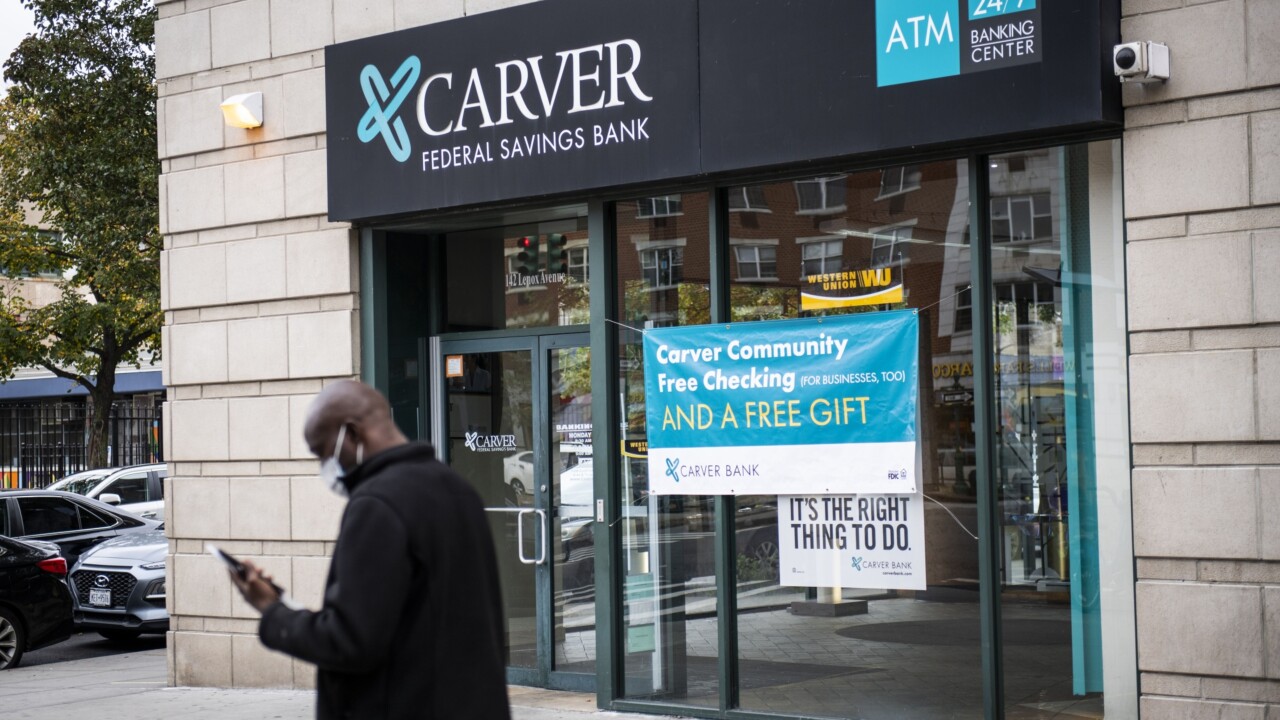Bank and thrift companies increased their holdings of home equity loans 26%, to $176.5 billion, in the 12 months that ended June 30, according to American Banker research.
The increase was even bigger for the top 100 banks and thrifts. Their portfolios of second mortgages and home equity lines of credit jumped 28%, to $163 billion.
Experts said the boost was largely driven by this year's rise in interest rates. According to Freddie Mac, the average 30-year fixed mortgage rate in the second half of 1998 was 6.82%; in the first half of this year it was 7.05%. That has heightened demand for home equity products among consumers who might otherwise have refinanced their first mortgages and taken out cash.
"When rates go up and people need money for debt consolidation or additions or remodeling, they're not going to refinance the 6.75% mortgage they took out last year with a 7.5% mortgage," said Michael McMahon, an analyst at Sandler O'Neill & Partners. "They're going to get a home equity line of credit."
Home equity is an attractive way to consolidate debts because the payments are tax-deductible. But during last year's historic mortgage refinance boom, many consumers refinanced their second mortgages and home equity lines along with their first mortgages, causing home equity portfolios to run off.
This year, with rates rising, "the refinance boom has leveled off, so even if originations (of home equity loans) are flat, the portfolios grow faster," said William Cooper, chief executive officer of TCF Financial of Minneapolis.
BankAmerica Corp.'s portfolio shrunk 3.07% but remained the largest in the industry, at $19 billion. The Charlotte, N.C. giant was followed closely by Bank One Corp., with $13.5 billion, and Wells Fargo & Co., with $12.4 billion.
The biggest gainers included: Bank of Montreal, with a 181% portfolio jump, to $1.08 billion; Associated Banc-Corp. of Green Bay, Wis., with a 86.5% surge, to $1.17 billion; and Bank of Tokyo-Mitsubishi, which had growth of 85.6%, to $1.2 billion. (See tables on pages 12 and 13.)
American Banker based its rankings on data from Federal Deposit Insurance Corp. regulatory call reports. The rankings may in fact understate banks' holdings, because they do not count first-lien home equity loans -- cases where the homeowner had no first mortgage to start with and then got a home equity loan to draw down on the equity in the house.
The rankings leave out some large nonbank home equity lenders, including Associates First Capital Corp., which holds $25.1 billion, and Household International, which has $21.4 billion.
With higher interest rates spurring demand for home equity loans, "there's been more aggressive marketing of these products by banks" through cross-sell initiatives, said Laura Borelli, president of the National Home Equity Mortgage Association. Much of this is being done through cross-sell initiatives, she said.
For some banks, the key attraction of originating home equity loans to hold in portfolio is yield. "We like the product because it has better spreads than commercial loans," said John F. Novak, group manager of consumer lending at Baltimore-based Provident Bankshares, whose portfolio grew 25.9%, to $1.6 billion, in the 12 months through June 30.
Most of that growth came from a business unit that buys home equity loans in large blocks, Mr. Novak said. The unit buys closed-end home equity loans in chunks of $30 million to $100 million from a select group of originators, including Countrywide Credit Industries. The sellers also service the loans for Provident.
A Consumer Bankers Association study released Monday found that fewer lenders are offering high loan-to-value home equity products than in the recent past. Among 29 lenders surveyed, only 5% offered loans with balances that would exceed the value of a home, down from 25% in a 1997 survey.
Last month the four bank and thrift regulatory agencies reiterated their concern that high-LTV loans do not receive adequate risk-return analysis by banks and that banks keep records of all exceptions made to their high-LTV lending policies. The agencies told banks that if their high-LTV holdings come close to 100% of total capital, they can expect "increased supervisory scrutiny."





